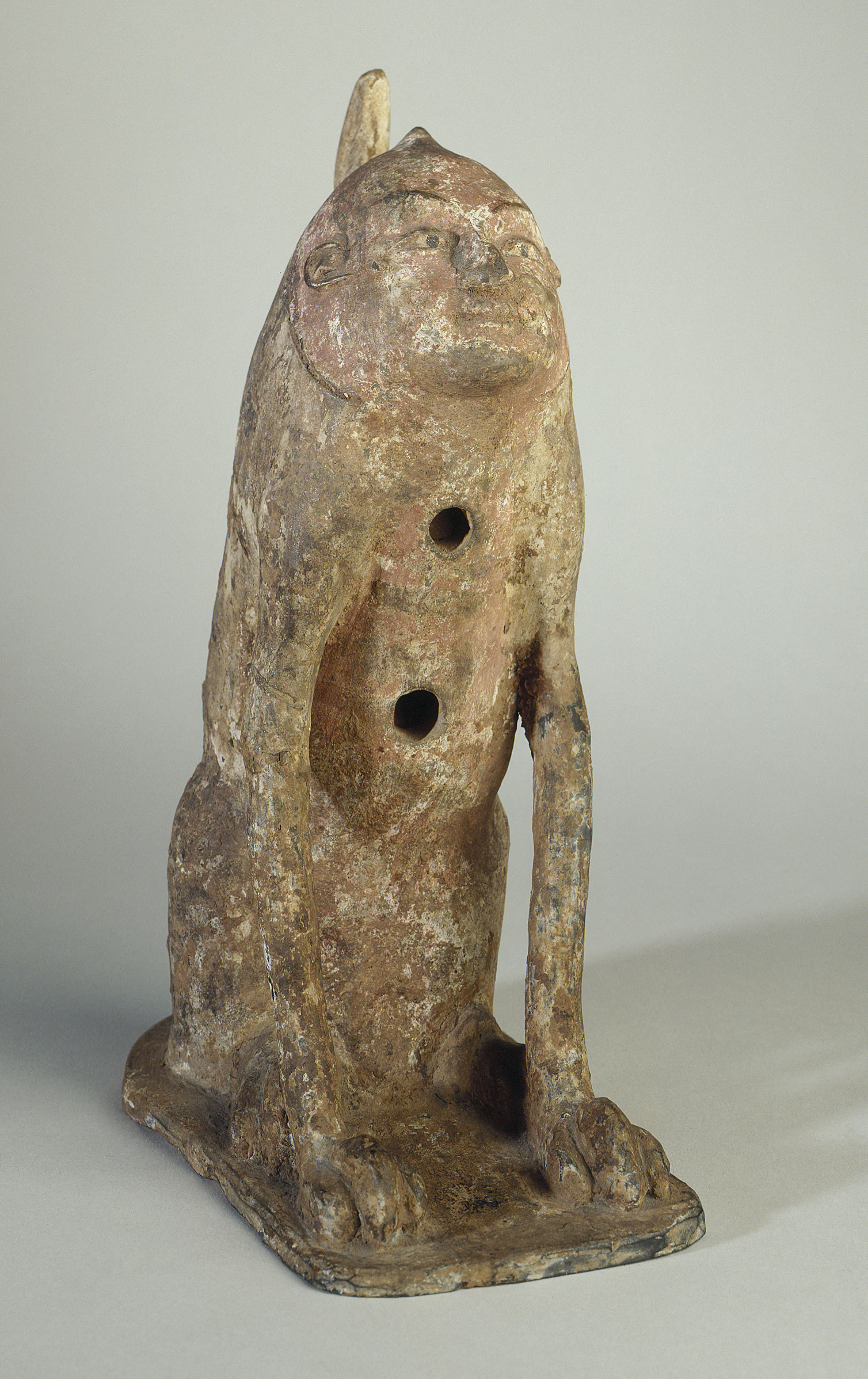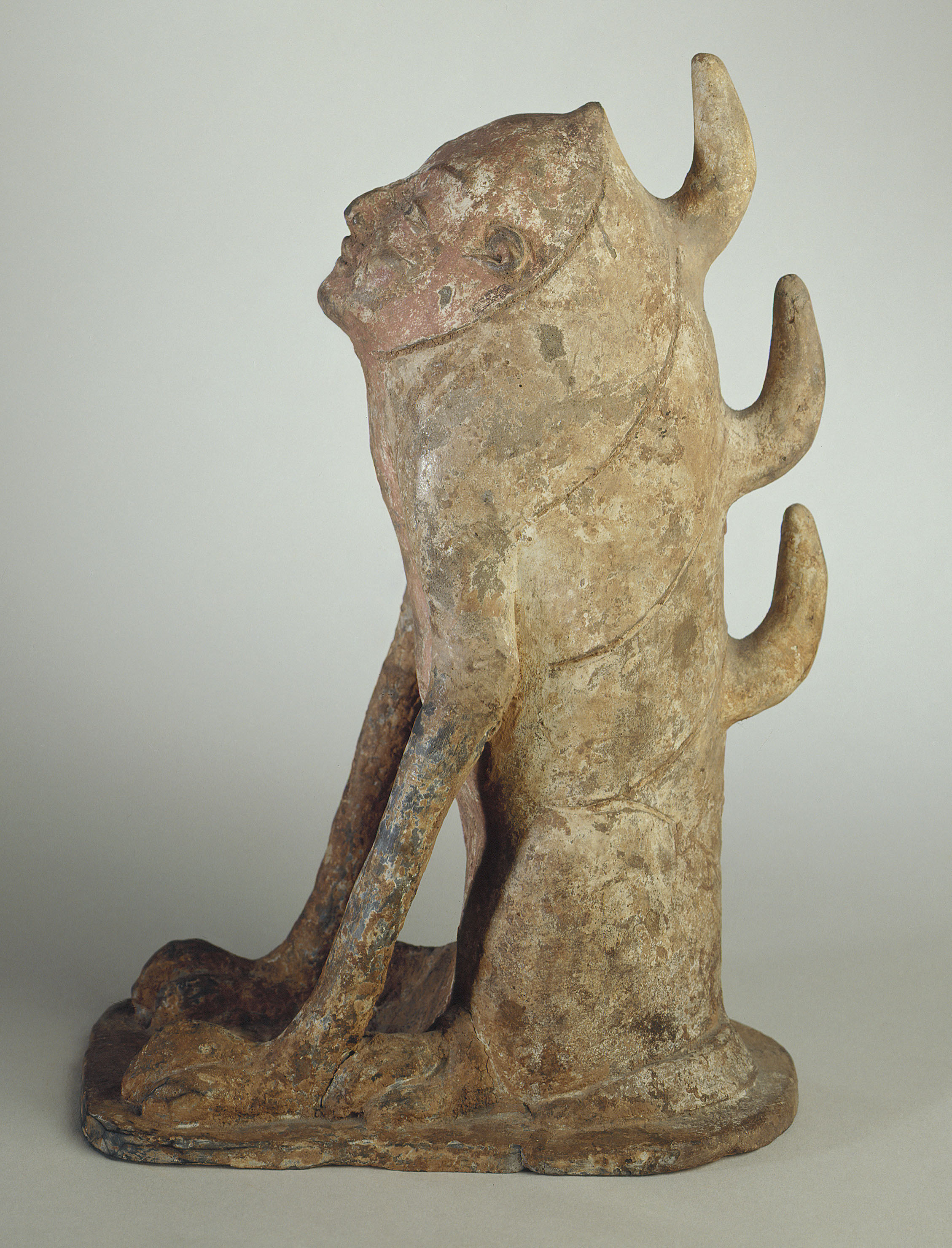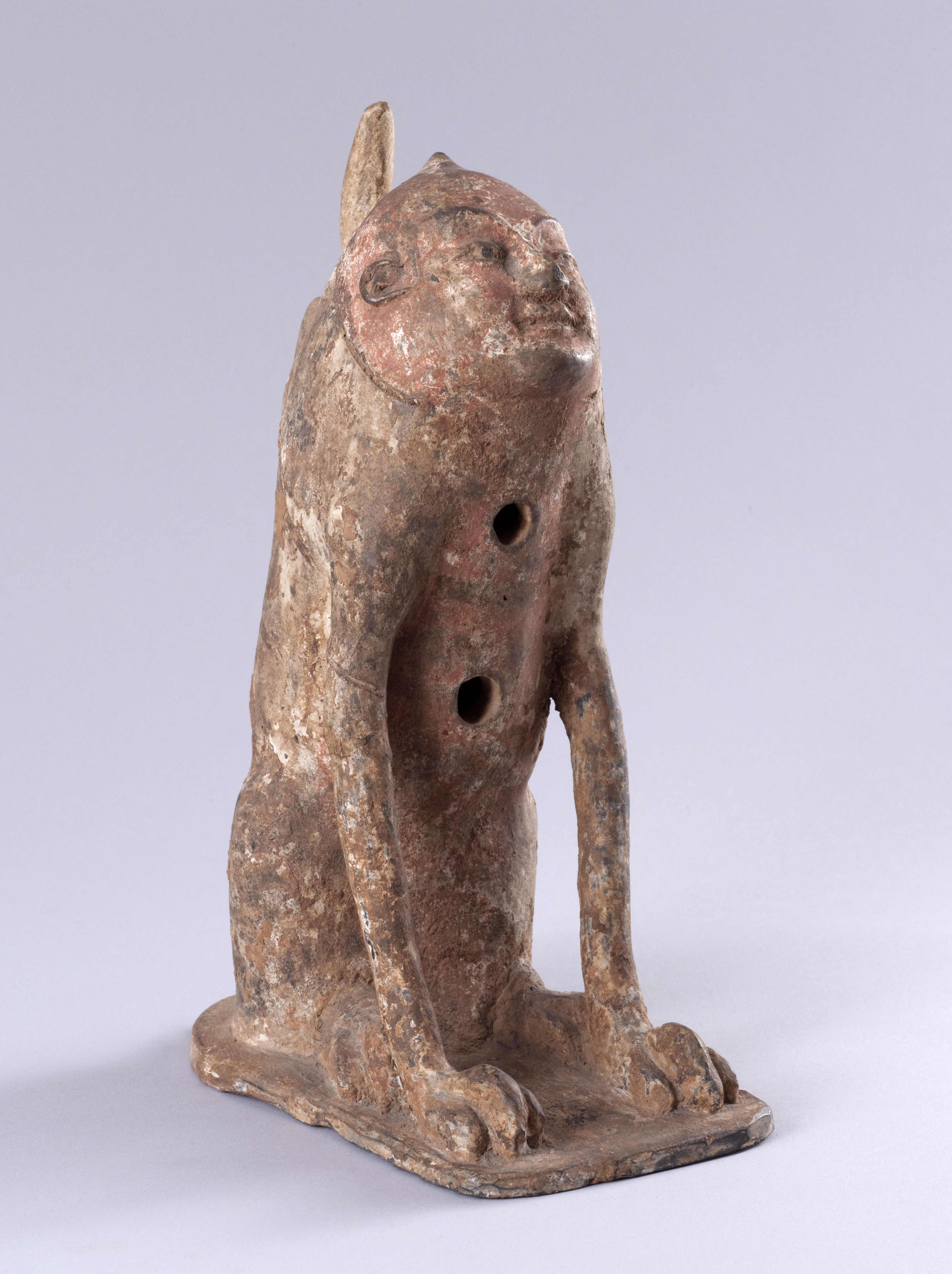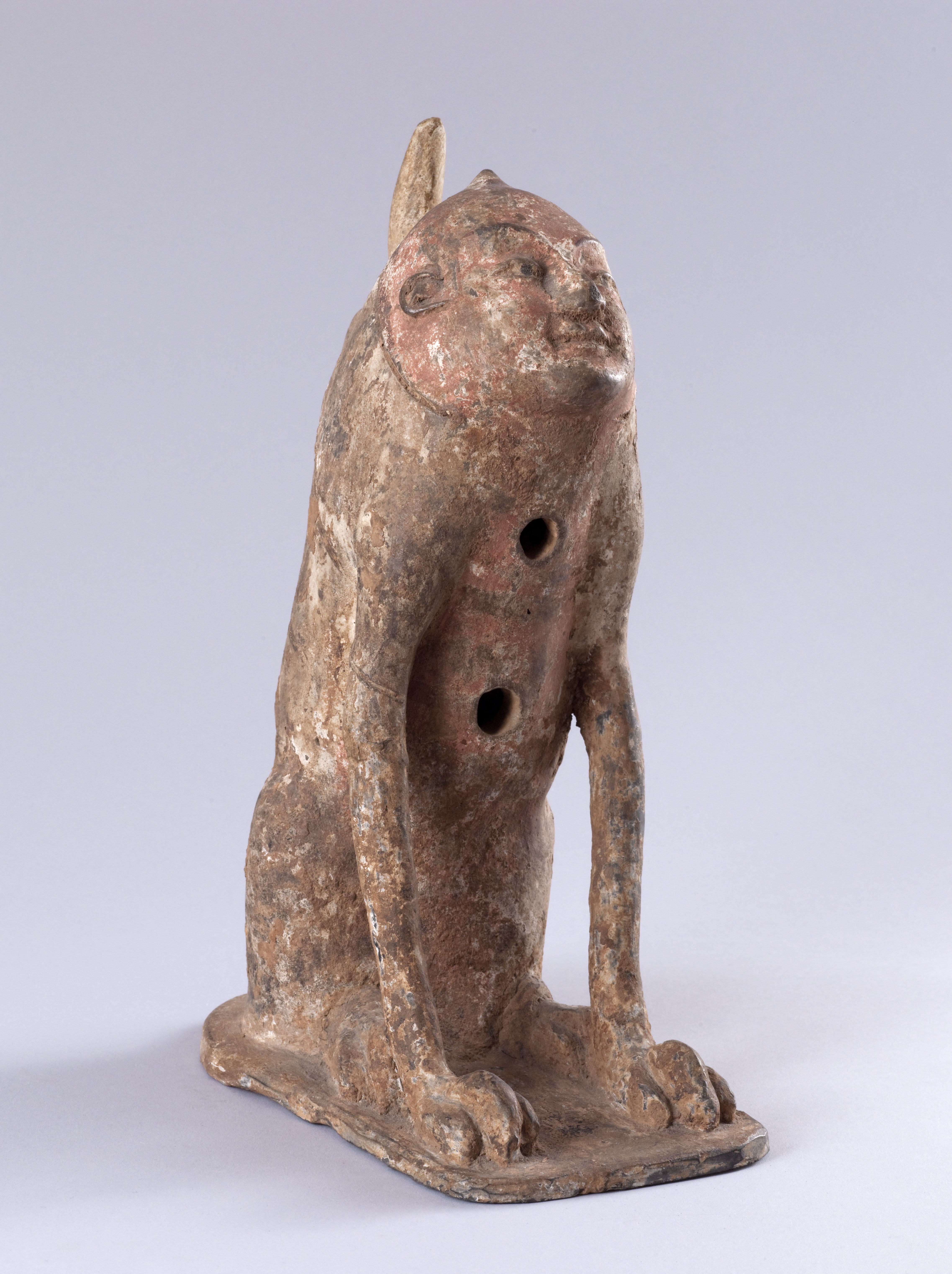
Bête gardienne du tombeau (zhenmushou 鎮墓獸)
Terre cuite, Moulage, Polychromie
Statue, Mingqi
Don manuel : Schulmann, Josette
M.C. 9941
In the Eastern Han (25-220) period, among other statuettes placed in the tombs, a warrior, with raised arm holding a spear made of a perishable material, performed a ritual of exorcism to protect the dwelling of the corporeal soul (po) from malefic influences. In the Western Jin period (265-316), his face wore a terrifying expression, perhaps that of a mask donned for the ceremony.
This protective figure, in association with a spiked-back monster, would gradually gain in stature. The tomb guardian (zhenmuyong) would double up as a military and public official. Two fabulous “tomb guardian beasts” (zhenmushou) would accompany him.
This zhenmushou is one of a very widespread type. It has the body of a dog and a human head, and still has the three horns or spikes of the most ancient fabulous creatures. Its relatively large size and remaining polychrome giving the face real presence make it a particularly impressive work. Specialists usually date pieces executed in this manner to the second half of the 5th century.
From the 6th century, two zhenmushou, one with a human head, the other with an animal head, protected the entrances to the funerary chambers. Their usage endured until the late Tang dynasty.
Gilles Béguin, Le petit peuple des tombes, Paris Musées, 2010, p.43.



